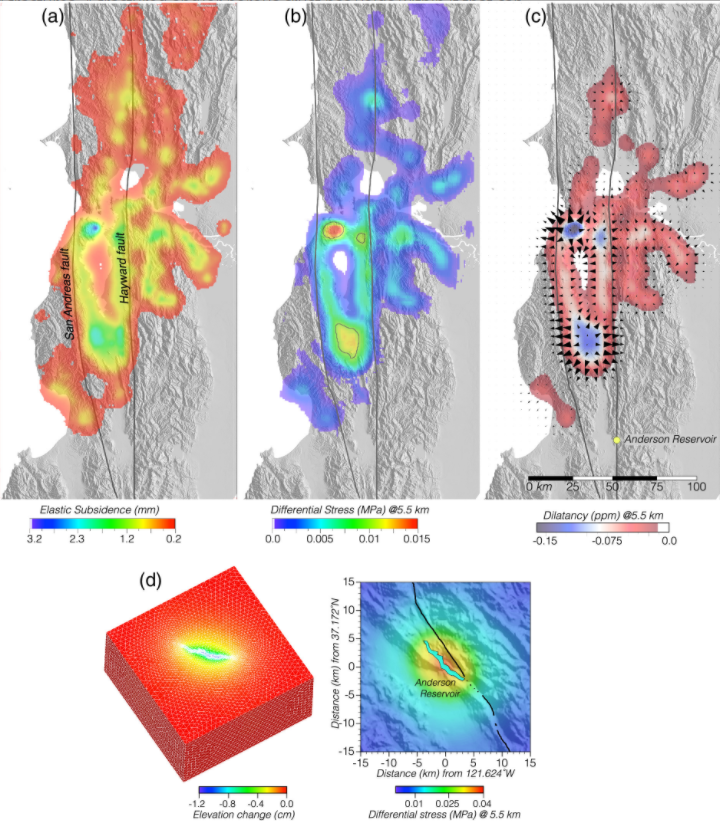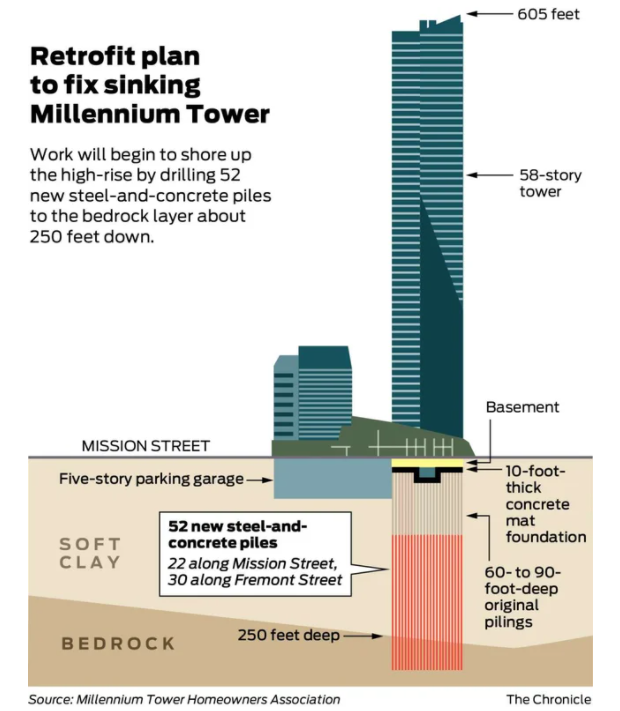We often hear that the greatest danger to coastal cities are rising sea levels resulting from climate change. But, in a recent study done at USGS the city of San Francisco is facing another threat, sinking into the bay. People don’t tend to consider how much a city actually weighs but members at USGS decided to run a study to answer that question. They estimate that the city of San Francisco is 1.3 billion tons, to put that into perspective this is about the same weight as the water held behind the hover dam, the weight of 3.2 million Boeing 747 jets or 5,700 Royal Caribbean International Cruise Liners. This amount of weight bearing on Earth’s surface is almost inconceivable but the effects of it are very real and need to be considered when planning a cities’ future. The image below shows the USGS analysis that was used in their study.

There are many factors that play into how a city settle’s into its geographical location. The soil profile that the city sits upon plays a large factor in the amount of settlement observed. The weight and the area in which it is applied has great control over the amount of sinking a structure experiences. The city on average sits 52’ above sea level but there have been instances of significant sinking through out the city which has caused concern. Recently one of the cities largest buildings, the Millennium Tower, which was constructed in 2009 began sinking at a rate of 1” per year. The $400 million building is drawing serious concern by owners and engineers due to its unpredictable sinking. The rate at which the building is settling into the old bay clay is considered very rapid by geomechanical and structural engineering norms. The problem was getting so bad that a remediation project was needed to try and stabilize the structure and stop it from sinking to one side.

Currently the Millennium Tower sits 17” off of its center axis due to the settling of a clay layer of soil that was not able to hold up the buildings massive 11,000 pound per square foot pressure. While the 12-year-old building is still useable this problem needs to be fixed quickly, using Finite Element Analysis software it was determined that the building could sink two times more than the current rate over the whole life time of the building.
This causes a number of problems for the structure and those who inhabit it. Window cracking, slanted floors and loud “popping” sounds have all been reported by people in the building. Now structural and geotechnical engineers are working to figure out a solution to this tricky problem. A pile jacking system was design to lift up the sinking side of the building and keep it up right. This system requires 52 concrete piles that run from the concrete mat foundation of the building all the way down into bed rock 250 feet below the surface. Each of these piles supports a hydraulic jack that is used to lift the building back into place. Similar to lifting a car with a jack when changing a tire.
This project cost upward of $100 million dollars to complete, the catch, it was never completed. At the end of August 2021 the remediation project was halted due to the building sinking even more during this construction phase. Designers believe that the sinking was cause by construction crews drilling larger than required pile holes which disturbed the existing soil supporting the builds foundation. Regardless of the cause of the problem it is clear that there is a gap between what we think we know about the current state of the structure and how it is really behaving.

This problem is one of the largest issues facing the city of San Francisco today. Sitting right along the San Andreas fault line a large earthquake my cause extreme structural damage to a building already struggling to remain standing. The effect of an earthquake skewed off its design axis is a real threat to the structural integrity of the building because the center of mass and center of rigidity that the original design was based off of is no longer the existing condition. A failure of the structure in a highly populous region would cause billions in damage and risk the lives of thousands of people. This is such a unique large scale issue that will take a ground breaking structural and geotechnical design to fix. Understanding how the structure interacts with the local soil profile is the key to deriving the best solution.
Sources :
USGS- https://agupubs.onlinelibrary.wiley.com/doi/full/10.1029/2020AV000277
Structure Mag- https://www.structuremag.org/?p=17838




Leave A Comment